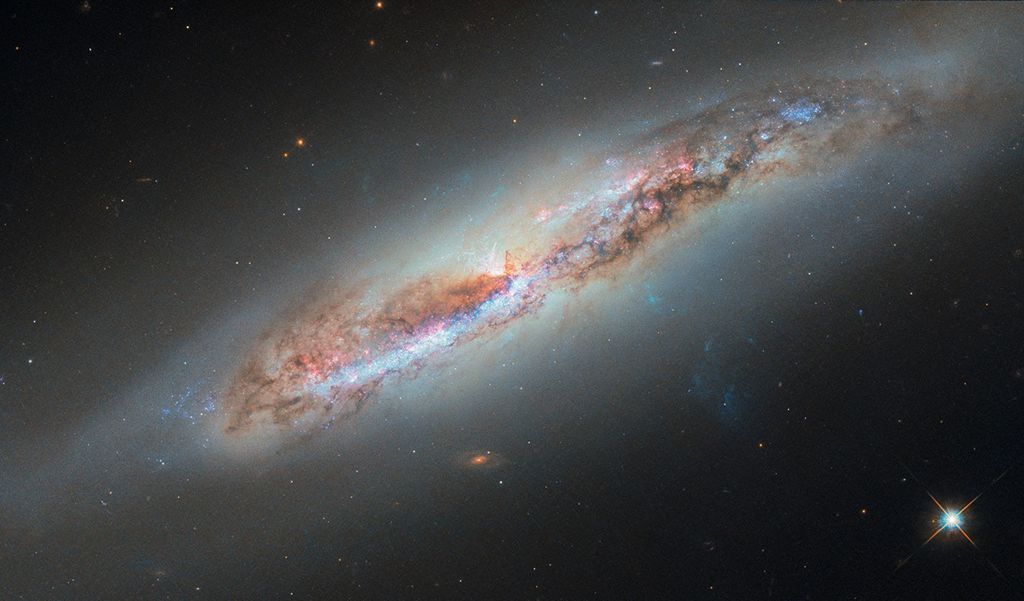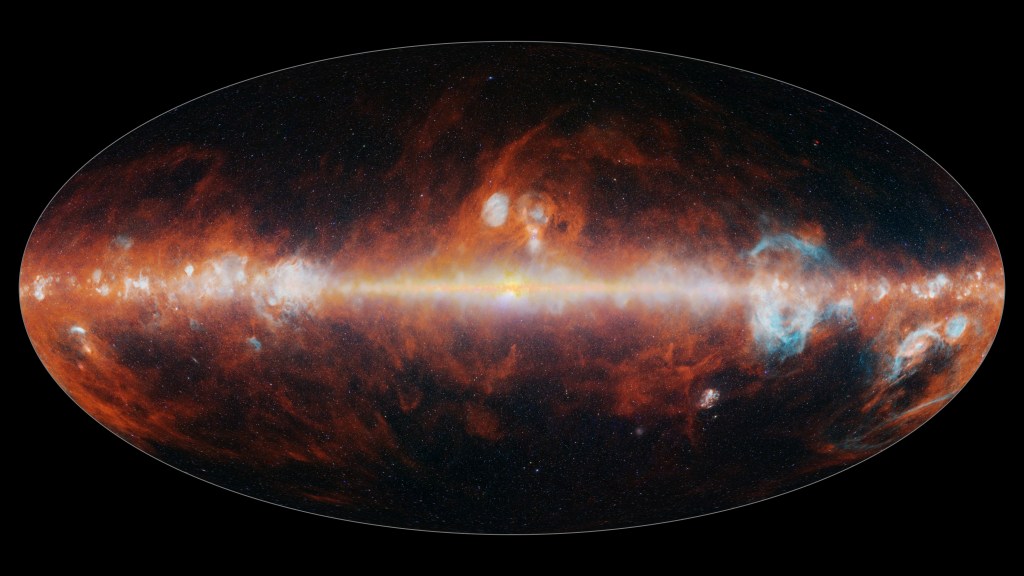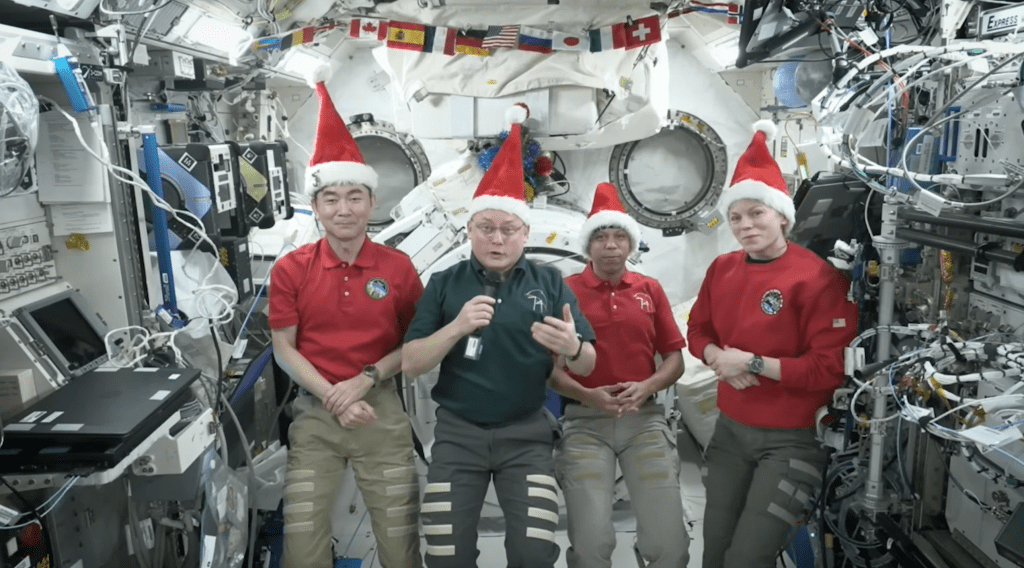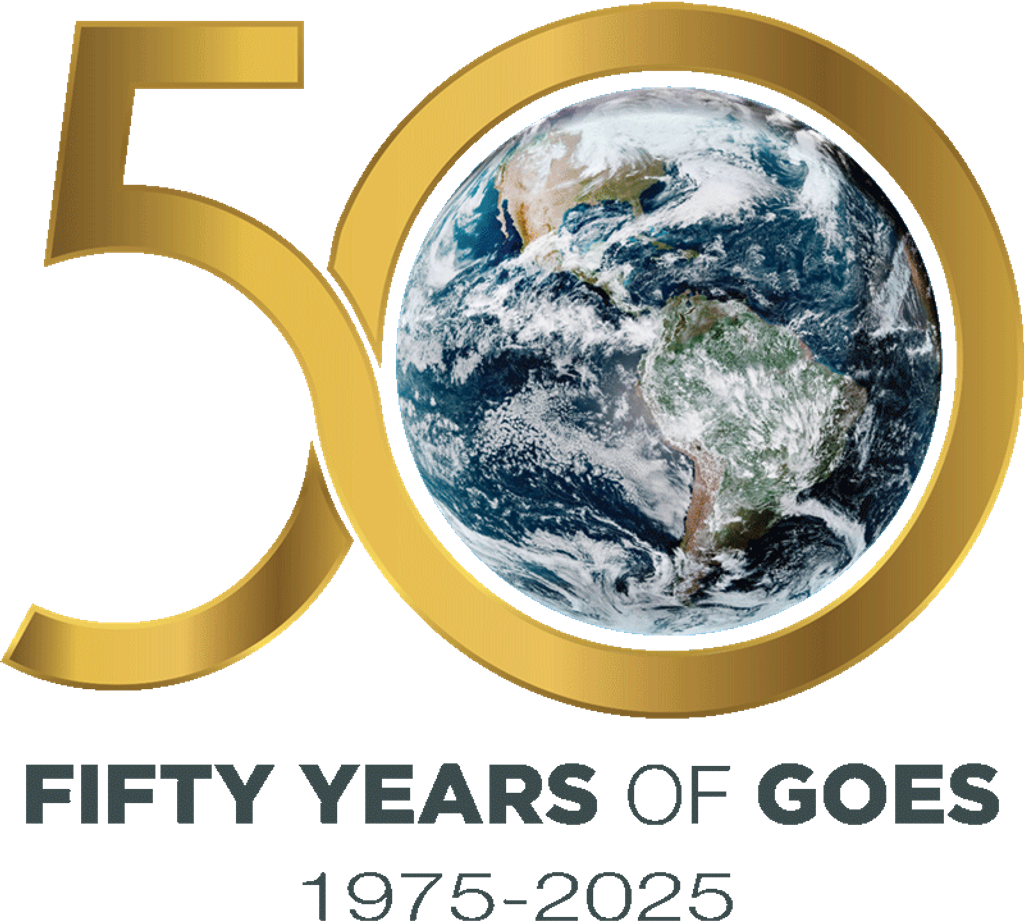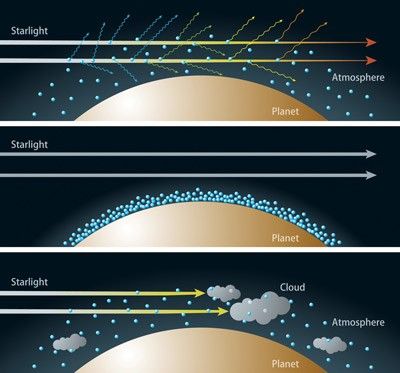Rayleigh scattering in exoplanet atmospheres
| Credit | NAOJ |
|---|---|
| Language |
|
Artist’s rendition of the relationship between the composition of the atmosphere and transmitted colors of light.
Top: If the sky has a clear, upward-extended, hydrogen-dominated atmosphere, Rayleigh scattering disperses a large portion of the blue light from the atmosphere of the host while it scatters less of the red light. As a result, a transit in blue light becomes deeper than the one in red light.
Middle: If the sky has a less extended, water-rich atmosphere, the effect of the Rayleigh scattering is much weaker than in a hydrogen-dominated atmosphere. In this case, transits in all colors have almost the same transit depths.
Bottom: If the sky has extensive clouds, most of the light cannot be transmitted through the atmosphere, even though hydrogen dominates it. As a result, transits in all colors have almost the same transit depths. (Credit: NAOJ)

